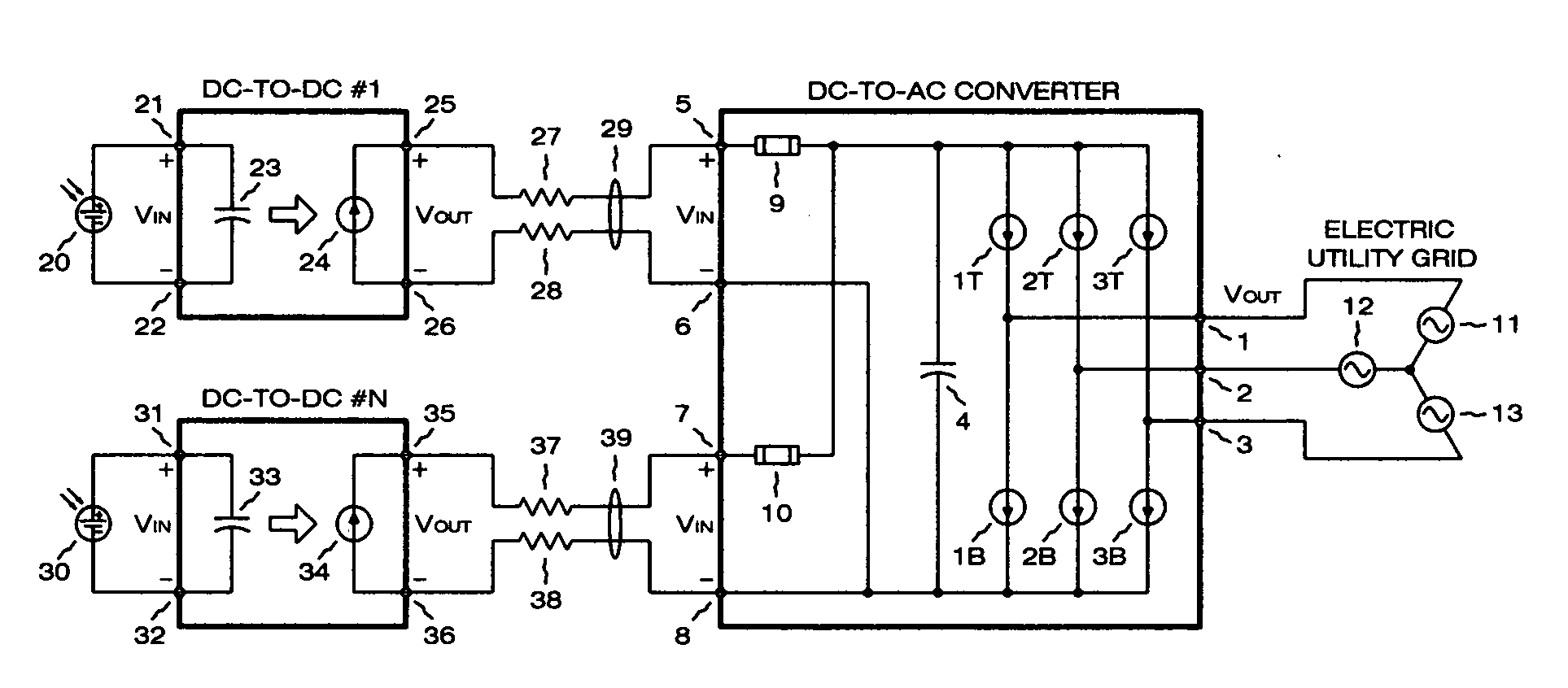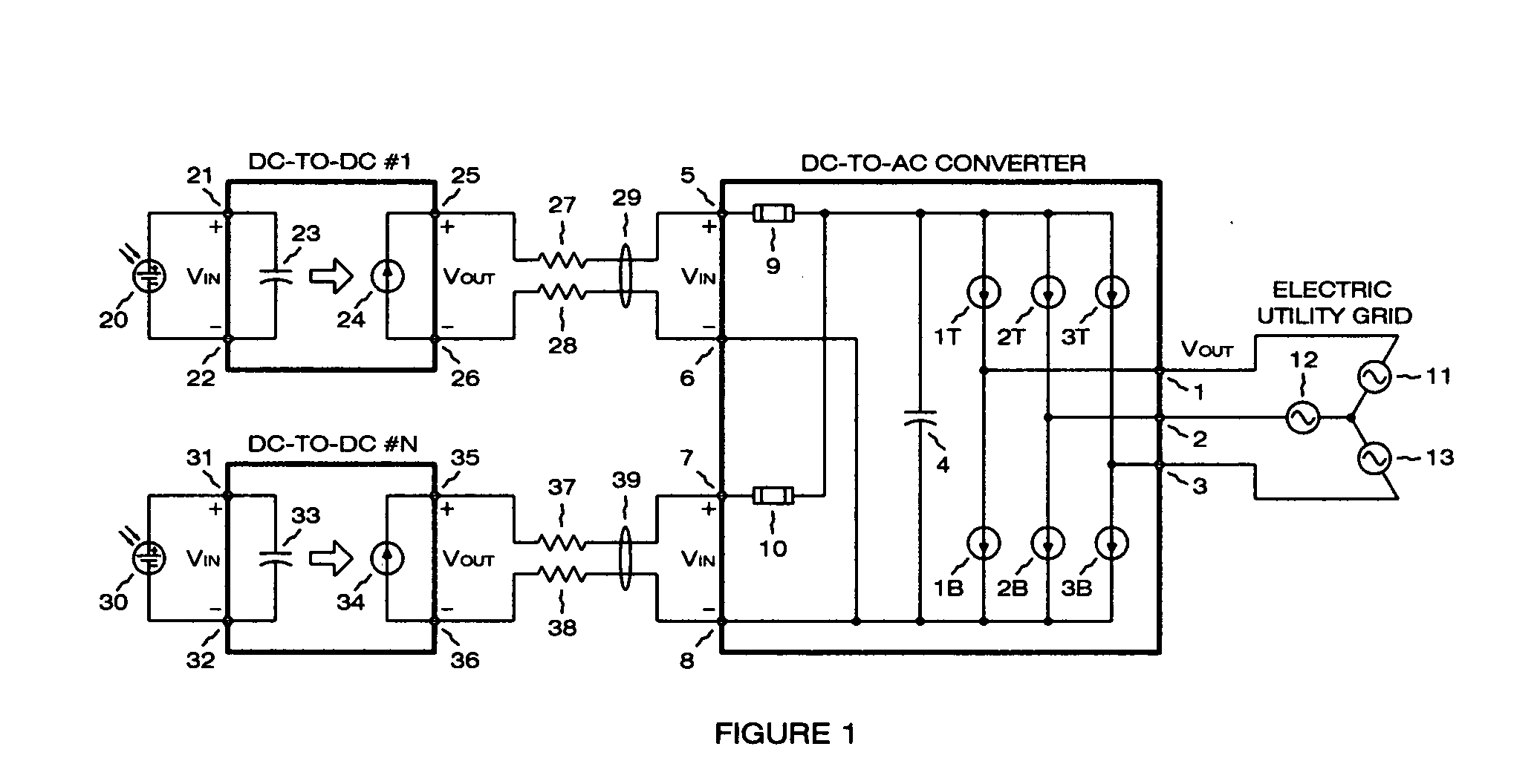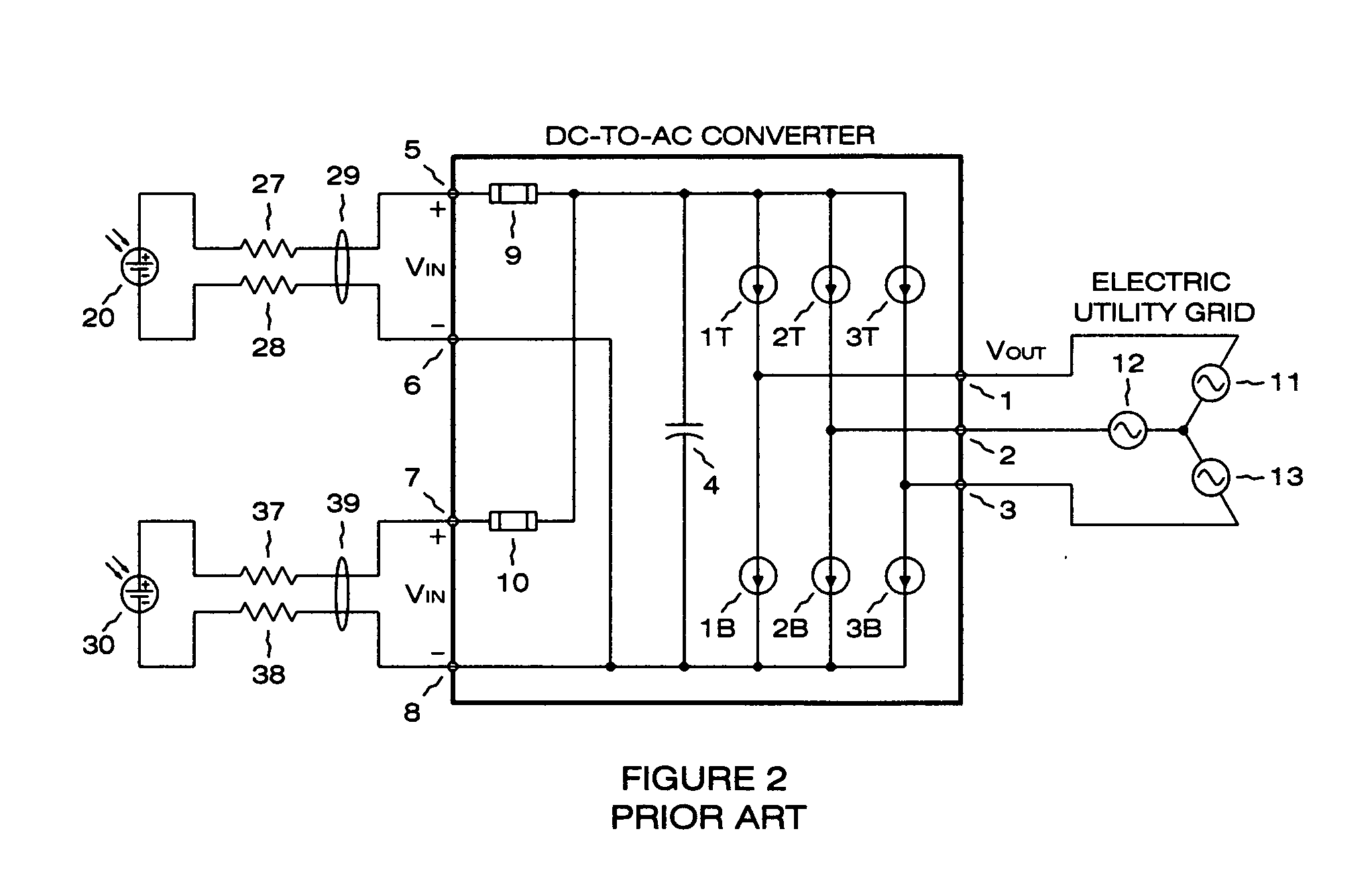Photovoltaic power plant with distributed DC-to-DC power converters
a technology of photovoltaic power plants and power converters, applied in photovoltaic energy generation, power conversion systems, electrical equipment, etc., can solve the problems of affecting the efficiency of photovoltaic power generation, etc. statistically weaker or stronger will not operate at their maximum power point voltag
- Summary
- Abstract
- Description
- Claims
- Application Information
AI Technical Summary
Problems solved by technology
Method used
Image
Examples
Embodiment Construction
[0007]FIG. 1 illustrates the basic form of the invention. Photovoltaic sub-array 20 is a collection of series and parallel connected photovoltaic modules connected at input terminals 21 and 22 of DC-to-DC converter #1 and across capacitor 23. The current and voltage characteristic of subarray 20 is that of an imperfect voltage source or an imperfect current source, depending on the operating point of subarray 20. As such, the power source “seen” at the DC-to-AC converter inputs is “soft” with limited voltage and limited current. Capacitor 23 serves to convert this soft source to a low impedance voltage source capable of delivering high peak currents which are orders of magnitude greater than what either subarray could deliver. DC-to-DC converter #1 converts this voltage source to a DC current source. Conductors 27 and 28 in conduit 29 carry the output current of DC-to-DC converter #1. Conductors 27 and 28 are indicated in FIG. 1 as resistors, each representing the total resistance o...
PUM
 Login to View More
Login to View More Abstract
Description
Claims
Application Information
 Login to View More
Login to View More - R&D
- Intellectual Property
- Life Sciences
- Materials
- Tech Scout
- Unparalleled Data Quality
- Higher Quality Content
- 60% Fewer Hallucinations
Browse by: Latest US Patents, China's latest patents, Technical Efficacy Thesaurus, Application Domain, Technology Topic, Popular Technical Reports.
© 2025 PatSnap. All rights reserved.Legal|Privacy policy|Modern Slavery Act Transparency Statement|Sitemap|About US| Contact US: help@patsnap.com



